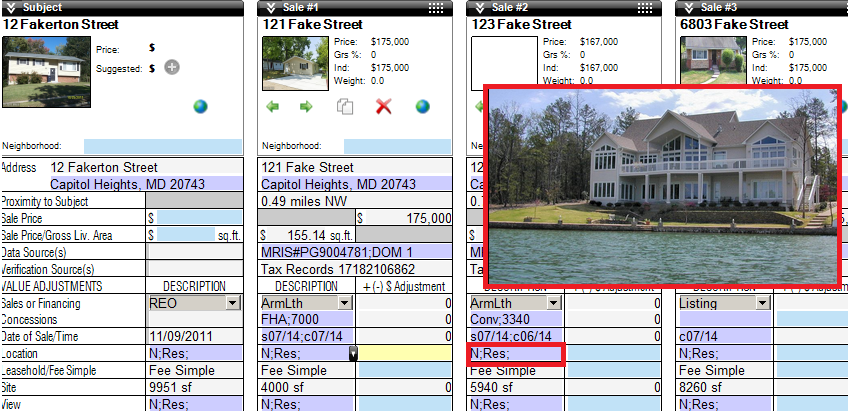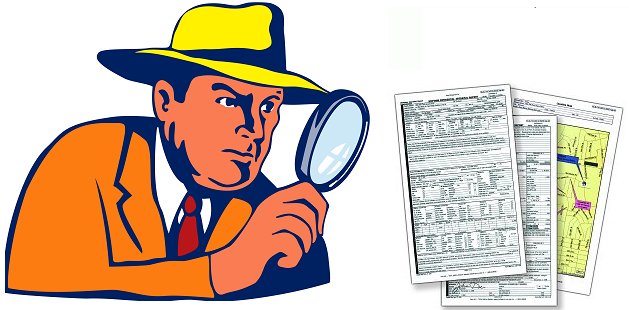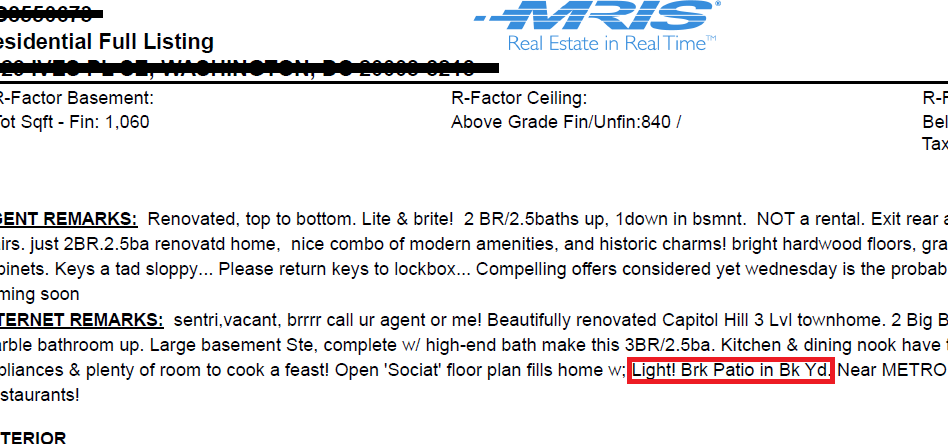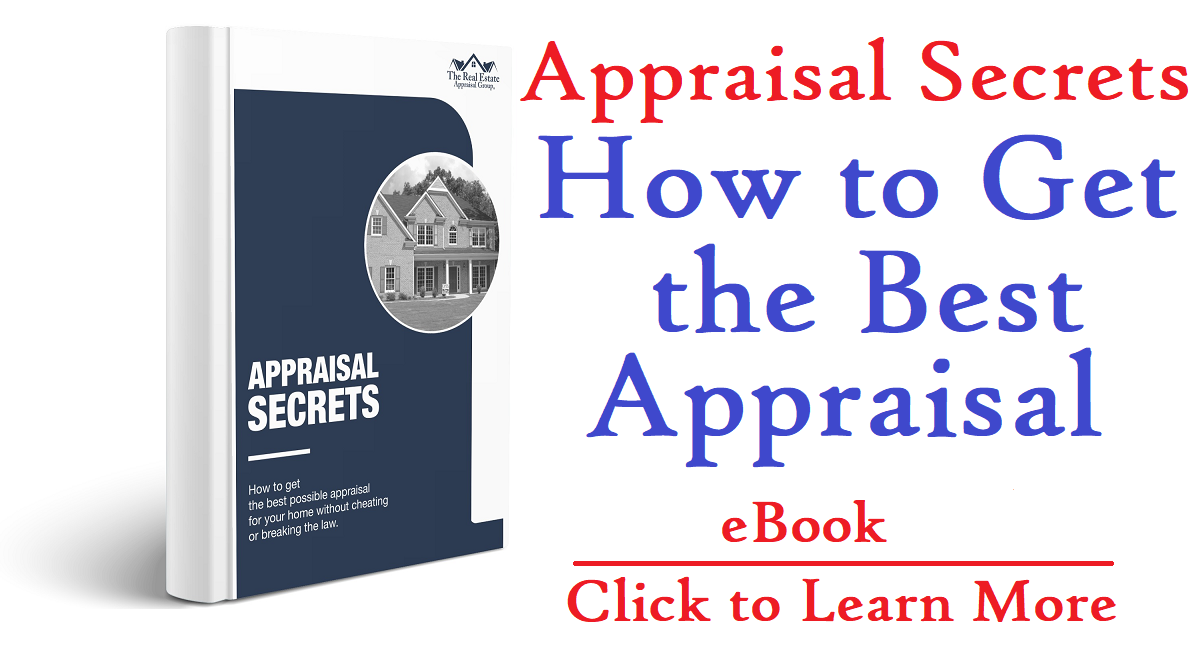“I may not be an appraiser- but I KNOW this house is worth more.”
-Everyone who isn’t an appraiser
Peolpe make mistakes.
I actually misspelled “people” when starting this article, but decided I wouldn’t correct it- it relates perfectly to the article. You noticed my error, but simply overlooked it and kept on reading. It’s okay to overlook things like that when you’re reading- but not when you’re selling a home.
Low appraisals are a popular topic in real estate these days. Lots of people say it’s because there’s a depressed market or that there are too many foreclosures but not as many people consider that there’s a mistake in the actual report. And even if you do consider that as a possibility, how do you find it?
All good agents look over their appraisals. In fact, all good agents look closely over their appraisals. But no agent can slave over a report, examining every last detail with a microscope- and that’s okay.
Here are a few things to keep in mind when reviewing a real estate appraisal.
1. Confirm your gross living area (if you can).
The Gross Living Area carries a lot of weight in a real estate appraisal.
Gross Living Area (GLA) is measured as the above-ground square footage in a property that can be heated and cooled. If a property hasn’t been updated with additional living space since the last appraisal (no matter how long ago), see if you can get your hands on it. While no two appraisers will measure a home the same way, the measurements should at least be close. If not, you should bring this to the attention of the appraiser and ask them to double check the property or explain why the property was measured differently.
This is true for lot size as well, although it doesn’t affect the value as much as the GLA. If you have a much larger lot on your hands, you should make sure your appraisers takes note of any excess land.
2. Look at your comparables and read the agent remarks.
Many appraisers use a cut-and-paste method of handling appraisals. They’ll copy living space, room counts, utilities- just about everything they can from public records or a listing service, and then move on. Take a look at one of the comparables on this report:

This looks like your average comparable grid from any report- but let’s delve a little deeper. Notice how the location of the subject property and all three comparables are marked as residential. But when we look at comparable #2, we can clearly see it’s a waterfront property. The appraiser should have adjusted value based on this fact, or at least acknowledged it in the report.
Let’s look even further into the comparables. Here is a description of the comp on 123 Fake Street:
While in this case it the agent only mentioned a patio, we’ve seen some lines like “this property is in a historic district” or “in-ground pool being built.” If some part or feature of a home isn’t reported in tax records or visible in listing photos, an appraiser could overlook it. If I were a client, I’d at least be curious as to why there was no adjustment was made for my patio it none of the comparables had one. Speaking of patios and adjustments…
3. Why did (or didn’t) my appraiser make adjustments?
In the comparable grid of an appraisal report, you can see all the major features of the subject property and it’s comparables- along with the adjusted value based on those features. You don’t need to know how much these adjustments should be- that would take forever to figure out. All you need to do is make sure adjustments are made where they need to be, and that they are consistent throughout the report.
Let’s look at our comparable grid:
The appraiser who wrote this report didn’t need to make any adjustments for porches or patios- and for your average porch or patio, that’s just fine. It becomes a problem when appraisers habitually ignore adjustments for patios, driveways, or other things that typically merit an adjustment. A small covered stoop (a porch in some appraisers minds) doesn’t merit an adjustment. A full wrap-around porch with hanging swings probably does. (Look at the balcony in our water-front comparable pictured above. That’s a sweet balcony, I’d want to see an adjustment.)
So some appraisers don’t know when to make adjustments, but most appraisers do. When they do, however, they need to be consistent. If an appraiser were to adjust +$1,000 for one comparable’s porch and +$3,000 for another, you should ask why.
In Conclusion…
These are a few quick things to keep in mind when reviewing an appraisal that is poorly written- or any appraisal for that matter. It’s important for any real estate professional to be aware that mistakes like this do occur, and more important that they can identify them. Whether it’s a slight mistake in the GLA measurements, or a major mistake such as screwing up the bedroom count, everyone makes mistakes. Make sure you catch them.
 Jonathan Montgomery is the founder and president of the The Real Estate Appraisal Group, and has been a real estate professional since 1998. He has been a broker, an investor, and currently works full-time as an appraiser. He enjoys handling real estate appraisals in Washington D.C., Southern Maryland, and Northern Virginia.
Jonathan Montgomery is the founder and president of the The Real Estate Appraisal Group, and has been a real estate professional since 1998. He has been a broker, an investor, and currently works full-time as an appraiser. He enjoys handling real estate appraisals in Washington D.C., Southern Maryland, and Northern Virginia.
#treagroup #realestate






I would like to add that a low appraisal does not mean that the appraisal has an error. An appraisal value is the most probable value and, although the market works quite well most of the time, a willing buyer and a willing seller do not always mean market value. Appraisers see the contract price on a sale and know of the serious implications (for both buyers and sellers) that come with a low appraisal. Most appraisers think long and hard, check and recheck, before they reconcile below a contract price.
We have 9.5 acres of land in a beatiful river view. Our aprasor used the value that town apraised the property for which is no where near the value of our 9.5 acres. 1 acre lots are selling for 350k and the apprasor gave 150k apprasial on the property. The comparision wheren’t in our town and the largest lot was only 2.5 acres?
In addtion she only gave 1459 sq feet of living space which is the sq footage of the second story of the house. The first floor has 6 sliding glass doors 1 bedroom an a office. Also there is a full kitchen bathroom and living room about 900 sq feet she didnt count. So the total sq feet should have been 2359 sq feet. Atleast….